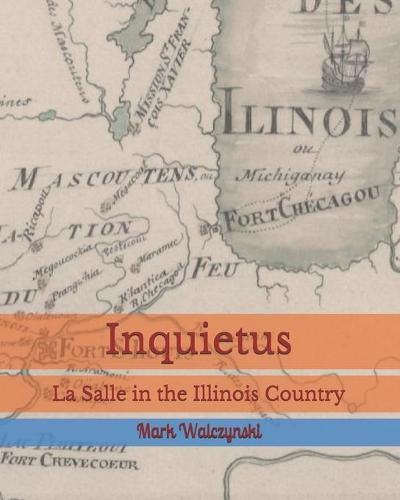Readings Newsletter
Become a Readings Member to make your shopping experience even easier.
Sign in or sign up for free!
You’re not far away from qualifying for FREE standard shipping within Australia
You’ve qualified for FREE standard shipping within Australia
The cart is loading…






Inquietus takes a fresh look at the achievements-and setbacks of Rene-Robert Cavelier, a seventeenth-century French adventurer, later known simply as La Salle, in the Illinois Country. This work reassesses assumptions about the explorer that have been repeated and used as source over the last 150 years. It brings to light and identifies significant places in the upper Illinois Valley that are associated with La Salle and his enterprise, and it takes a critical look at previous assumptions based on ambiguous or misleading information found in seventeenth-century maps, reports, and correspondences. Inquietus also incorporates subjects such as Ice Age geology, geography, and climatology to help the reader to better understand the environment and conditions of seventeenth-century Illinois, it explores linguistic problems associated with La Salle’s ability to communicate with Native American groups, and it examines rivalries between the explorer and the Jesuits, and between La Salle and other French explorers. Lastly, Inquietus reviews La Salle’s Illinois Country legacy; how his observations about the Illinois Valley waterways, landscape, and natural resources have been mined, harvested, or otherwise manipulated by the government, private companies, and individuals. This is an eye-opening and much-needed reexamination of La Salle in today’s Illinois.
$9.00 standard shipping within Australia
FREE standard shipping within Australia for orders over $100.00
Express & International shipping calculated at checkout
Inquietus takes a fresh look at the achievements-and setbacks of Rene-Robert Cavelier, a seventeenth-century French adventurer, later known simply as La Salle, in the Illinois Country. This work reassesses assumptions about the explorer that have been repeated and used as source over the last 150 years. It brings to light and identifies significant places in the upper Illinois Valley that are associated with La Salle and his enterprise, and it takes a critical look at previous assumptions based on ambiguous or misleading information found in seventeenth-century maps, reports, and correspondences. Inquietus also incorporates subjects such as Ice Age geology, geography, and climatology to help the reader to better understand the environment and conditions of seventeenth-century Illinois, it explores linguistic problems associated with La Salle’s ability to communicate with Native American groups, and it examines rivalries between the explorer and the Jesuits, and between La Salle and other French explorers. Lastly, Inquietus reviews La Salle’s Illinois Country legacy; how his observations about the Illinois Valley waterways, landscape, and natural resources have been mined, harvested, or otherwise manipulated by the government, private companies, and individuals. This is an eye-opening and much-needed reexamination of La Salle in today’s Illinois.